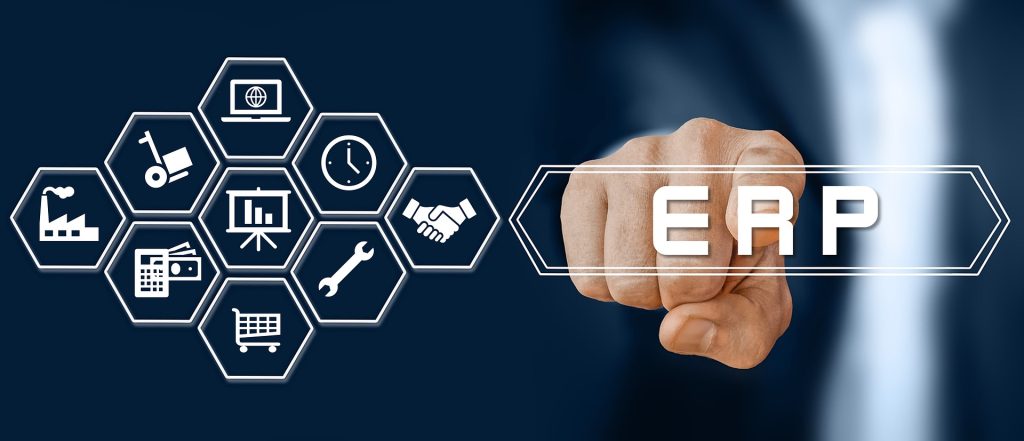
ERP (Enterprise Resource Planning)
An ERP (Enterprise Resource Planning) system for an e-learning website is designed to integrate and streamline various administrative, academic, and operational processes. By consolidating data and automating tasks related to student management, course delivery, finance, content management, and performance tracking, an ERP solution enhances the efficiency and functionality of an e-learning platform. This ensures a seamless learning experience for both students and administrators, offering real-time insights, scalability, and improved resource management.
Benefits of ERP
- Streamlined Operations: Automation of administrative tasks, finance, and student management reduces the time spent on manual processes and allows educators to focus on teaching.
- Improved Learning Experience: ERP enhances user experience through personalized learning paths, real-time feedback, and seamless content delivery, ensuring students stay engaged and motivated.
- Data-Driven Decisions: Real-time analytics and reporting enable administrators and instructors to make informed decisions about course offerings, student support, and financial planning.
- Enhanced Collaboration: Integrated communication tools foster collaboration between students, instructors, and administrators, creating a connected learning community.
- Scalability: As the e-learning platform grows, the ERP system can easily accommodate more users, courses, and administrative needs, making it an ideal solution for both small and large institutions.
- Cost Savings: Automation and centralization of data lead to reduced operational costs, improved resource management, and faster decision-making.
Key Features of ERP
-
Student Information System (SIS) Integration: ERP systems come with a built-in SIS that manages student profiles, enrollment, attendance, grades, and certifications. From the time a student registers on the e-learning website, their data is securely stored and managed through the ERP. This integration enables course registration, academic performance tracking, and personalized communication.
-
Course and Content Management: An ERP system enables centralized management of all courses, study materials, and multimedia content. Administrators and instructors can create, update, and manage course offerings directly through the ERP platform, ensuring that the website’s content is always up-to-date. It also helps track which materials are accessed, how often, and by whom, optimizing content delivery.
-
Learning Management System (LMS) Integration: Most e-learning websites rely on LMS for course delivery, and ERP can seamlessly integrate with LMS to provide unified data management. This integration allows real-time tracking of student progress, assignment submissions, quiz performance, and feedback from instructors, making it easier to manage learning outcomes and student engagement.
-
Communication and Collaboration Tools: ERP systems come equipped with communication modules that allow for seamless interaction between students, instructors, and administrative staff. Features such as discussion boards, forums, chat, and email notifications can be integrated to foster collaboration. It also allows personalized communication for student advisories, announcements, and feedback.
-
Reporting and Analytics: ERP systems provide detailed reporting and analytics, offering insights into student performance, course effectiveness, enrollment trends, and financial health. Real-time data can be accessed through dashboards, allowing administrators to track KPIs such as student retention rates, course completion rates, and revenue generation. Instructors can also view individual or class performance reports to adapt teaching strategies.
-
Exam Management and Proctoring: ERP systems facilitate exam scheduling, online assessments, and proctoring tools. It allows administrators to set up exams and ensure that online assessments are carried out securely through anti-cheating mechanisms like live proctoring, browser lockdown, and timed assessments. Exam results are automatically integrated into the student’s academic record.
-
Certification and Credentialing: Upon course completion, the ERP system can generate automated certificates, diplomas, or credentials that students can download directly from the platform. This process ensures that students receive proper recognition for their learning achievements without manual intervention, helping to build trust and engagement in the platform.
-
Compliance and Accreditation Management: For institutions that need to comply with educational regulations or accreditation standards, ERP systems help manage necessary documentation and reporting. The system can track accreditation requirements, submission deadlines, and ensure that the courses and operations meet compliance guidelines set by governing bodies.
-
Mobile Access and Multi-Platform Support: Many modern ERP systems offer mobile-friendly interfaces, allowing students, instructors, and administrators to access the platform from smartphones and tablets. This improves accessibility, allowing users to participate in courses, manage tasks, and monitor progress anytime, anywhere.
-
Personalized Learning Paths: ERP systems can integrate personalized learning paths for students based on their progress, preferences, and performance. It can recommend courses, resources, and assignments tailored to each learner’s needs, improving engagement and outcomes.

Conclusion
An ERP system for an e-learning website is a vital tool for managing the diverse needs of modern education platforms. From student enrollment and content management to assessments, finance, and real-time analytics, ERP solutions centralize and automate core processes, improving efficiency and user experience. Whether for online schools, corporate training platforms, or universities, ERP ensures that the platform is scalable, secure, and able to deliver high-quality education in a seamless manner. By integrating all functions into a unified system, e-learning websites can focus on delivering knowledge and value to students while efficiently managing their resources and operations.

